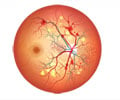It is widely accepted that reduced insulin production by the pancreas, a hallmark of type 2 diabetes, is due to the death of the beta cells.

"The prevailing theory is that the death of beta cells is responsible for the decline in insulin production in type 2 diabetes," said study leader Domenico Accili, MD, professor of Medicine and the Russell Berrie Foundation Professor at CUMC. "But when you look at a diabetic pancreas, you find very few, if any, dead beta cells. So, the organ dysfunction is out of proportion with the number of dead cells. Nobody has had a plausible explanation for this."
Dr. Accili and co-author Chutima Talchai, PhD, suspected that some answers might lie in the activity of FoxO1 protein. FoxO1 - a transcription factor, or protein that controls when genes are switched on or off - serves as a kind of gauge of the body''s nutritional status. When a cell is well nourished, FoxO1 is inactive and stays in the cell body, or cytoplasm. In the face of a physiologic stress, such as high blood sugar, FoxO1 travels to the nucleus and ultimately disappears. "The starting point of our study was to ask, why does FoxO1 go to the nucleus in the early phases of diabetes, and is the decrease in FoxO1 a cause of diabetes or a consequence?" said Dr. Accili.
To address these questions, Dr. Talchai created a strain of mice whose beta cells lack FoxO1. Initially, the mice appeared normal, but after a physiologic stress, such as pregnancy or aging, the mice developed low levels of insulin and high levels of glucagon (a pancreatic hormone that counters the effects of insulin) - responses also seen in human diabetes.
The researchers then used a novel form of cell-lineage tracing to find out what happened to the beta cells. "To our surprise, we found that the beta cells had not disappeared but had changed into a different cell type. They had sort of walked back from fully committed insulin-making cells to an uncommitted progenitor-like, multipotent development stage," said Dr. Accili. In addition, some of the beta cells became glucagon-producing cells, which would explain why people with diabetes have abnormally high glucagon levels. The same changes in beta cells were observed in other mouse models of diabetes.
"Our findings tell us that FoxO1 is necessary to maintain the identity of beta cells," said Dr. Accili. "During metabolic stress, beta cells gradually lose FoxO1 and begin to de-differentiate, probably as a self-protective mechanism."
Advertisement
The study is titled, "Pancreatic B-Cell Dedifferentiation As Mechanism Of Diabetic B-Cell Failure." Contributors are Domenico Accili (CUMC), Chutima Talchai (CUMC and Chulalongkorn University, Bangkok, Thailand), Shouhong Xuan (CUMC), Hua V. Lin (Eli Lilly China Laboratories, Shanghai, People''s Republic of China), and Lori Sussel (CUMC). Dr. Talchai is a postdoctoral research scientist at CUMC and a New York Stem Cell Foundation-Druckenmiller Fellow.
Advertisement
The authors have filed a patent for an assay that can distinguish normal cells from de-differentiated cells. The authors declare no other financial or other conflicts of interest.
Columbia University Medical Center provides international leadership in basic, pre-clinical and clinical research, in medical and health sciences education, and in patient care. The medical center trains future leaders and includes the dedicated work of many physicians, scientists, public health professionals, dentists, and nurses at the College of Physicians and Surgeons, the Mailman School of Public Health, the College of Dental Medicine, the School of Nursing, the biomedical departments of the Graduate School of Arts and Sciences, and allied research centers and institutions. Established in 1767, Columbia''s College of Physicians and Surgeons was the first institution in the country to grant the M.D. degree and is among the most selective medical schools in the country. Columbia University Medical Center is home to the largest medical research enterprise in New York City and State and one of the largest in the United States.
Upon its official opening in October 1998, the Naomi Berrie Diabetes Center at Columbia University Medical Center established a new standard of care for the 1.6 million people with diabetes in the New York area-combining world-class diabetes research and education programs with unprecedented family-oriented patient care. Named for the mother of the late Russell Berrie, founder of RUSSâ„¢ Toys, the center is today recognized as the most comprehensive diabetes research and treatment center in the tri-state region and has been designated a national "Diabetes Center of Excellence." Approximately one hundred faculty and students, affiliated with the Center, conduct basic and clinical research related to the pathogenesis and treatment of all forms of diabetes and its complications. For more information, visit www.nbdiabetes.org.
Source-Newswise















